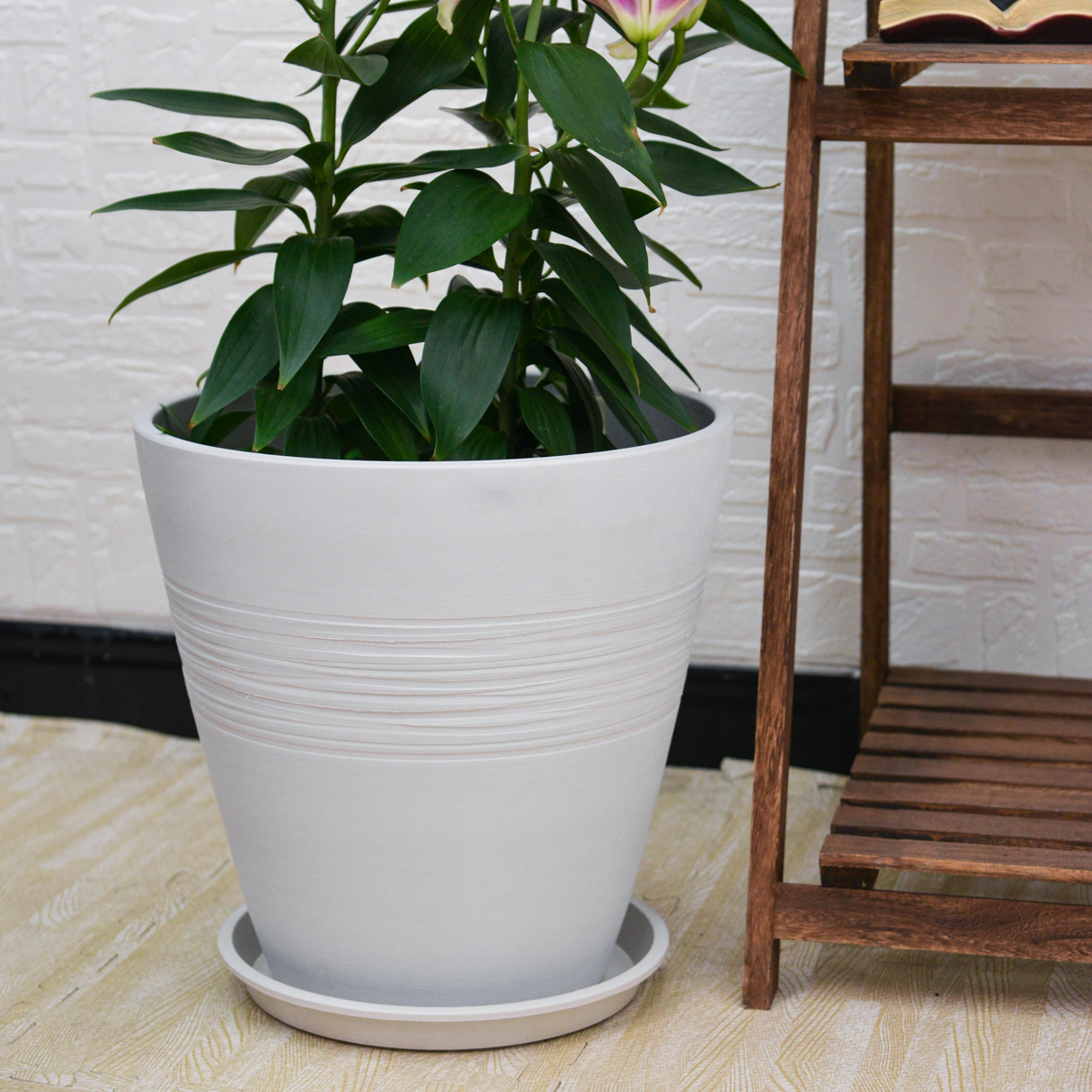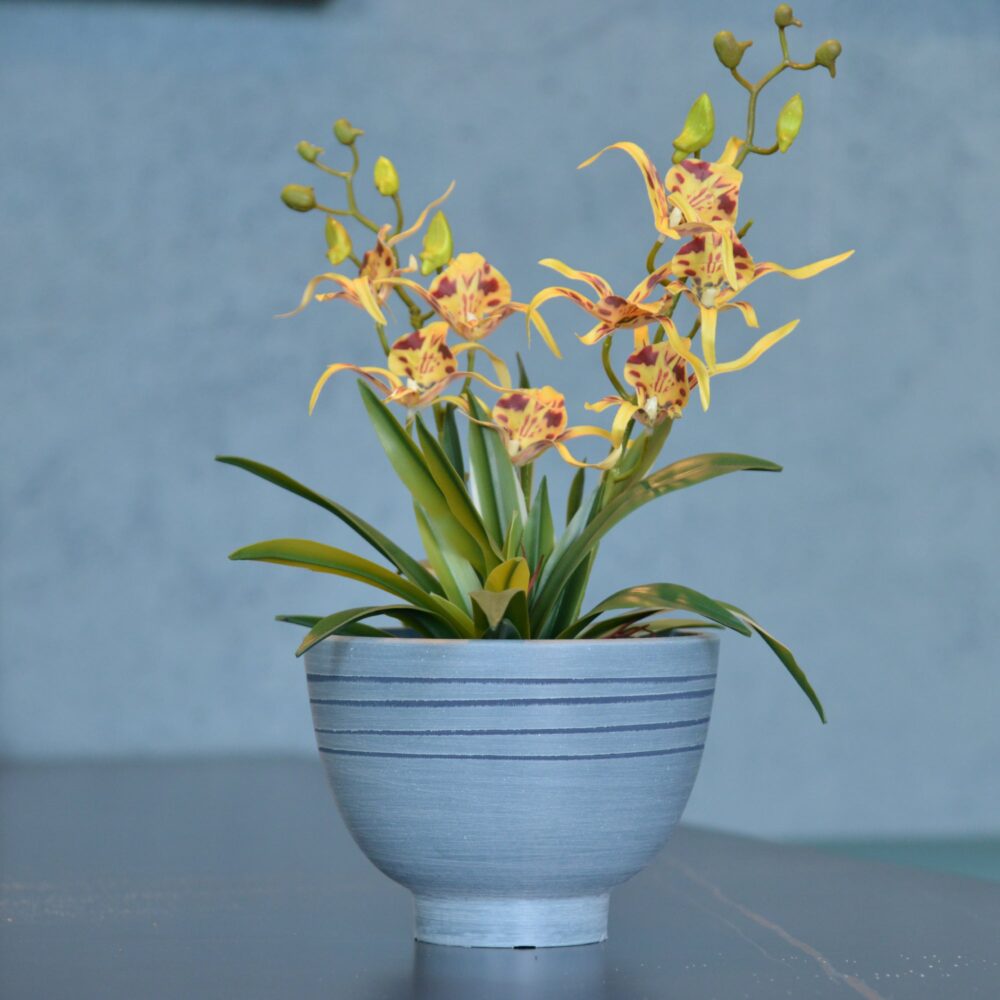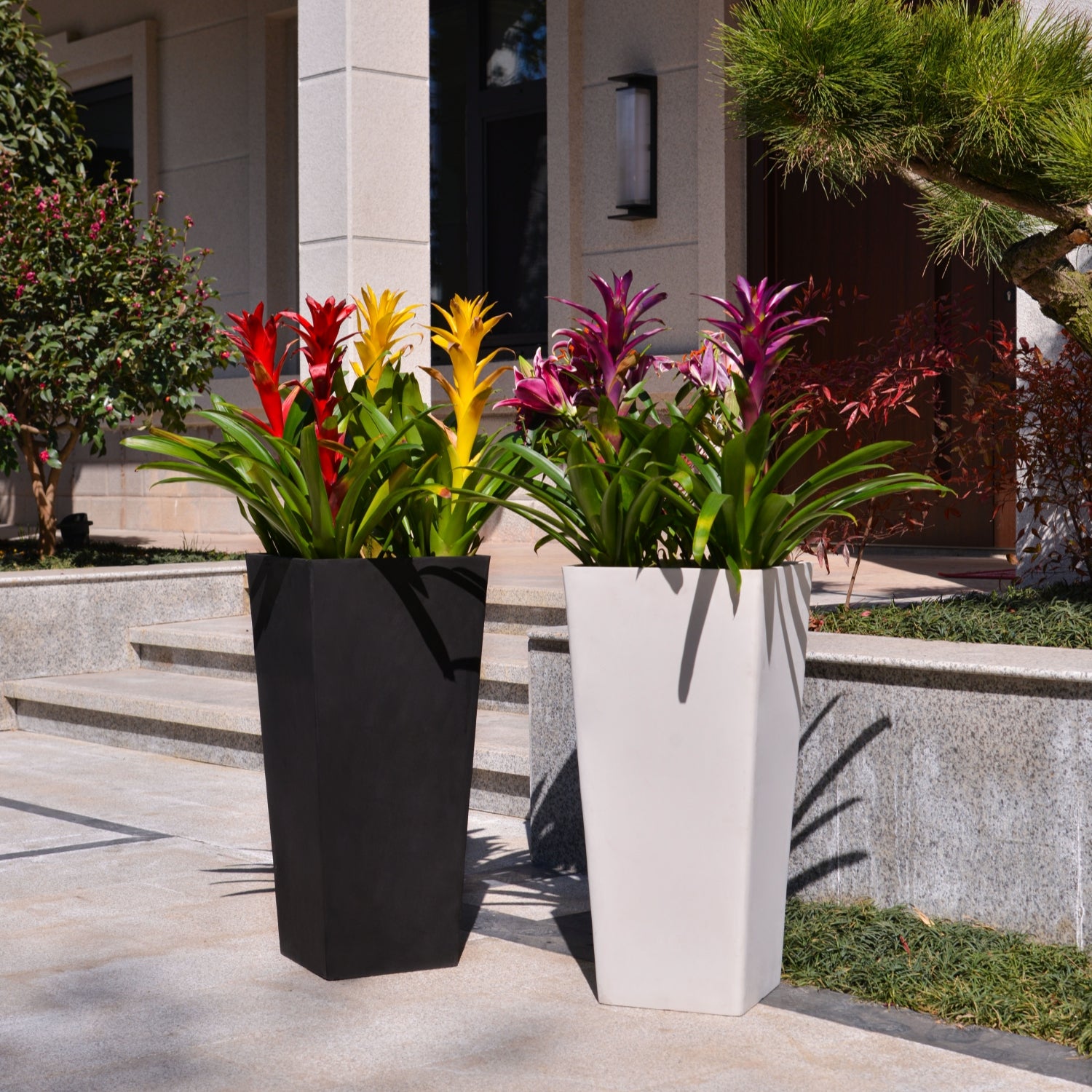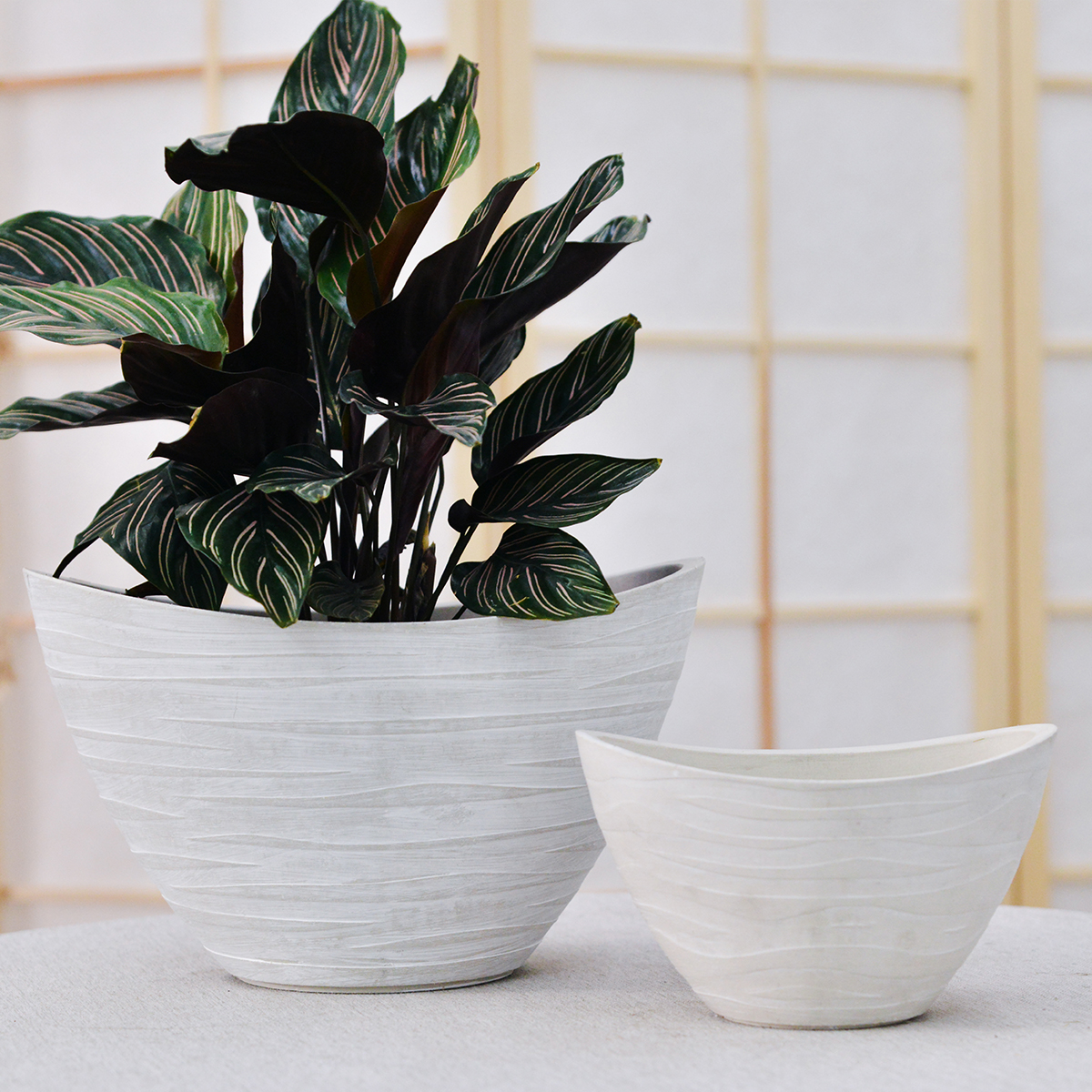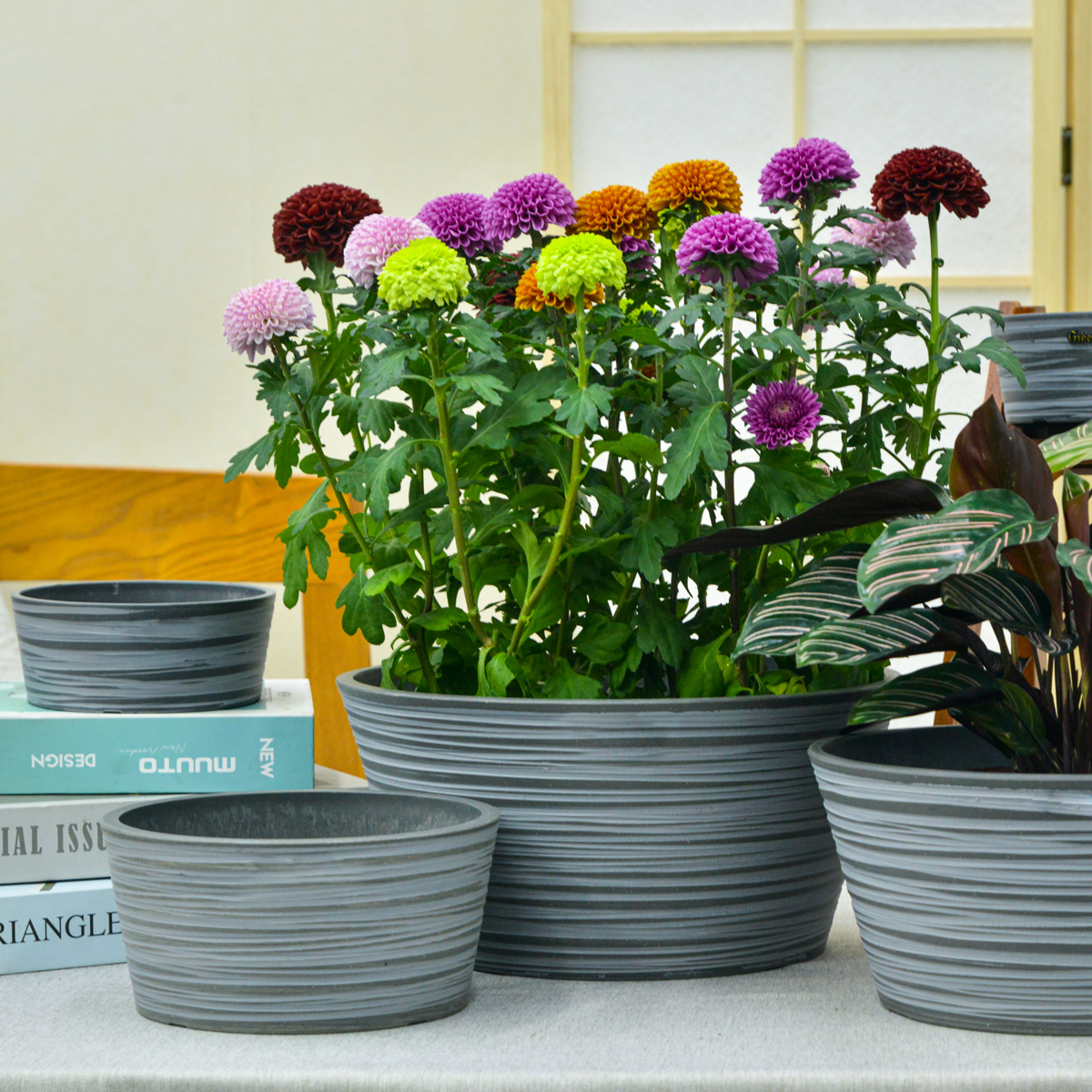Hoyas in Pots: The Ultimate Guide to Growing Wax Plants Outdoors in Containers (Fragrant & Exotic Blooms!)
Want to add a touch of exotic beauty and intoxicating fragrance to your patio, balcony, or garden? Growing Hoyas, also known as Wax Plants, in containers is a wonderfully rewarding way to bring these fascinating and often fragrant vines into your outdoor spaces. Celebrated for their unique, star-shaped, waxy flowers often borne in clusters, their glossy, succulent-like foliage, their diverse forms and growth habits, and their adaptability to container gardening, Hoyas are perfect for adding a touch of the tropics and captivating fragrance to your outdoor living areas. This comprehensive guide will provide you with everything you need to know to grow Hoyas successfully in outdoor pots, from selecting the best varieties and containers to mastering essential care techniques for a stunning and fragrant floral display.
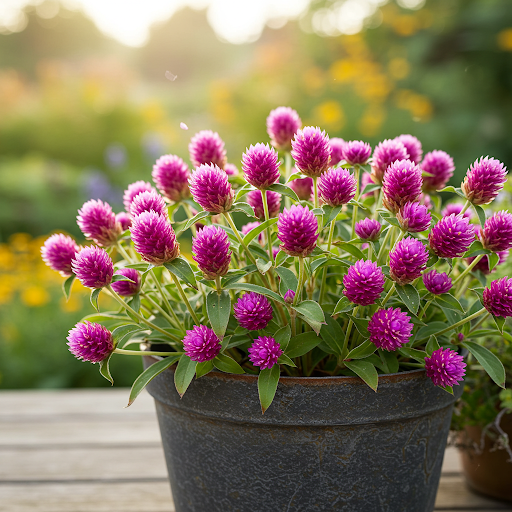
Hoyas
What are Hoyas?
Hoyas, commonly known as Wax Plants or Wax Vines, are a genus of evergreen climbing or trailing plants in the Apocynaceae family (Dogbane family). Native to tropical and subtropical regions of Asia, Australia, and the Pacific Islands, they are popular ornamental plants worldwide, prized for their unusual and beautiful flowers, attractive, often succulent-like foliage, fragrant blooms (in many species), and relative ease of care. Hoya plants are characterized by their vining or trailing stems, often epiphytic in nature (growing on trees in their native habitats), their thick, waxy or succulent-like leaves that come in a variety of shapes, sizes, and textures, and their distinctive flowersthat are typically star-shaped, waxy in appearance, and often borne in rounded clusters or umbels. Flowers can range in color from white, pink, red, yellow, orange, green, to near-black, and many species are highly fragrant, especially in the evening or at night. They exhibit a diverse range of growth habits,1 from vigorous climbers to more compact trailers, making them versatile for hanging baskets, trellises, and container gardening. Hoyas are known for their long-lasting blooms, their ability to thrive as houseplants as well as outdoor container plants in suitable climates, and their collectible nature, with many enthusiasts seeking out rare and unusual species and cultivars.
Are Hoyas Good for Outdoor Pots?
Yes, Hoyas are exceptionally well-suited for outdoor pots and container gardening, and are a popular choice for adding exotic beauty and fragrance to patios, balconies, and other outdoor living spaces, especially in warm, humid climates like Singapore. Their adaptability to container culture, manageable size in pots (especially with pruning), tolerance of slightly root-bound conditions, beautiful and fragrant flowers, and attractive foliage make them ideal for container cultivation. Growing Hoyas in pots offers several advantages:
- Ideal for Patios and Balconies: Container gardening allows you to enjoy Hoyas even if you have limited garden space, such as on balconies, patios, or decks. They are perfect for adding vertical interest and fragrance to paved areas.
- Portability: Potted Hoyas can be easily moved to optimal locations for sunlight, display, or shelter from extreme weather. You can rearrange them to create stunning focal points or seasonal displays. Bring them indoors to protect from cold if needed in marginally hardy climates (not a concern in Singapore).
- Controlled Environment: Container gardening allows you to provide the specific well-draining, airy soil mix that Hoyas prefer and control watering and fertilization more precisely, which is important for their health and flowering.
- Design Versatility: Hoyas in pots can be used as standalone specimen plants in decorative pots, trained on small trellises or hoops in containers, displayed in hanging baskets, or incorporated into mixed container arrangements with other tropical plants. Their vining or trailing habit makes them versatile for various container gardening styles.
- Pest and Disease Management: Container growing can help reduce some soilborne pest and disease issues that can affect Hoyas planted directly in the ground.
- Highlighting Fragrance: Placing potted fragrant Hoyas near seating areas or windows allows you to fully enjoy their often-intoxicating scents, especially in the evenings.
- Root Restriction (Often Beneficial): Hoyas often bloom better when slightly root-bound, which is easily achieved in containers. Container growing naturally restricts root growth, which can encourage flowering in Hoyas.
Ideal Growing Conditions for Hoyas in Pots:
Types of Hoyas for Pots: Many Hoya species and cultivars are well-suited for container growing, but some are particularly popular and manageable in pots:
- Hoya carnosa and Cultivars: The classic Wax Plant, Hoya carnosa, and its many cultivars are very popular for containers. They are relatively easy to grow, tolerant of some neglect, and produce fragrant pink or white flowers. Look for cultivars with variegated foliage or different flower colors.
- Hoya pubicalyx and Cultivars: Hoya pubicalyx is another vigorous and floriferous species that does well in containers. It has attractive foliage and produces clusters of star-shaped, often reddish or purplish flowers.
- Hoya bella: A smaller, more delicate Hoya species with small, white, bell-shaped flowers. Hoya bella is excellent for hanging baskets and smaller pots.
- Hoya lacunosa: Known for its highly fragrant, small, creamy-white or yellowish flowers and attractive, textured leaves. Hoya lacunosa is well-suited for hanging baskets and pots.
- Hoya linearis: A unique Hoya with long, slender, fuzzy leaves and small, white flowers. Hoya linearis is best grown in hanging baskets or tall pots where its trailing foliage can be displayed.
- Hoya multiflora: “Shooting Star Hoya,” known for its unusual, reflexed yellow flowers that resemble shooting stars. Hoya multiflora is a more upright grower and can be grown in pots with support.
- Compact or Slower-Growing Hoyas: For smaller pots or limited space, choose more compact or slower-growing Hoya species and cultivars. Many newer hybrids are bred to be more compact and floriferous.
Light: Hoyas generally prefer bright, indirect light. They thrive in bright, filtered sunlight or bright shade. East-facing patios or balconies that receive morning sun and are shaded in the afternoon are often ideal. Avoid direct, harsh afternoon sun, especially in hot climates like Singapore, as this can scorch their leaves. Some Hoyas, especially those with thicker, more succulent leaves, can tolerate more sun, but most prefer bright, indirect light. Too much shade can reduce flowering and cause leggy growth. Insufficient light will result in fewer flowers and weaker growth.
Soil: Hoyas need very well-draining, airy soil that is rich in organic matter but also allows for excellent aeration around their roots. Use a special orchid potting mix or epiphytic potting mix, or create your own mix by combining:
- Orchid bark (fir bark): Provides excellent drainage and aeration.
- Coco coir or peat moss: Retains some moisture while maintaining good aeration.
- Perlite or pumice: Further improves drainage and aeration.
- Optional: Small amount of horticultural charcoal: Helps keep the mix fresh and improves drainage.
Avoid heavy, moisture-retentive potting mixes or garden soil, as these can lead to root rot, which Hoyas are susceptible to if their roots stay too wet. Good drainage and aeration are crucial for healthy Hoya growth in containers.
Watering: Hoyas are semi-succulent plants and prefer to dry out slightly between waterings. Water thoroughly when the top inch or two of soil is dry. Water deeply until water drains out of the drainage holes. Then, allow the soil to dry out somewhat before watering again. Avoid overwatering and consistently soggy soil, which is the most common mistake in Hoya care and can lead to root rot. Also, avoid letting Hoyas completely dry out for extended periods, especially when they are actively growing or blooming. They prefer a “cycle of drying out and then thorough watering.” Watering frequency will depend on weather conditions, pot type, and Hoya species. Water more frequently during warmer, drier periods and less frequently during cooler, more humid periods. Reduce watering significantly in winter, allowing the plant to rest. Use rainwater or filtered water if possible, as Hoyas can be sensitive to salts and minerals in tap water.
Temperature: Hoyas thrive in warm temperatures, ideally between 65-80°F (18-27°C) during the growing season. They are tropical plants and appreciate warmth. In Singapore’s consistently warm climate, temperature is generally ideal for Hoyas year-round. They can tolerate slightly higher temperatures, but avoid extremes of heat or cold. Protect from frost and freezing temperatures if growing in marginally hardy climates (not a concern in Singapore).
Humidity: Hoyas generally prefer moderate to high humidity, reflecting their tropical origins. Singapore’s humidity is generally well-suited to Hoyas. They benefit from increased humidity, especially during hot, dry weather. You can increase humidity around potted Hoyas by grouping plants together, using a humidity tray, or misting them occasionally (though good air circulation is also important to prevent fungal issues).
Fertilizer: Hoyas are light to moderate feeders and benefit from regular fertilization during their active growing and blooming season to support healthy growth and flowering. Fertilize every 2-4 weeks during the spring and summer growing season (active growth period). Use a balanced liquid fertilizer (e.g., 20-20-20 or 10-10-10) diluted to half strength, or a fertilizer specifically formulated for orchids or flowering houseplants. Follow product label instructions for application rates. A fertilizer slightly higher in phosphorus (the middle number) can encourage better flowering. Reduce or stop fertilizing during the dormant period in winter (or during cooler, less active growth periods). Avoid over-fertilizing, which can lead to salt build-up in the soil and damage roots.
Choosing the Right Pots for Hoyas:
Suitable Pot Types: Hoyas need pots that provide excellent drainage and aeration. Suitable pot types include:
- Terracotta Pots: Terracotta is an excellent choice for Hoyas as it is porous, allowing for good aeration and drainage, and helps prevent overwatering. Terracotta also provides good stability.
- Orchid Pots: Plastic orchid pots with many drainage holes and slits are specifically designed for epiphytic plants like orchids and Hoyas, providing excellent drainage and aeration.
- Net Pots (within decorative pots): Hoyas can be grown in net pots (plastic mesh pots) placed inside decorative cache pots. Net pots provide maximum aeration and drainage.
- Hanging Baskets: Hoyas with trailing growth habits (Hoya bella, Hoya linearis, etc.) are ideal for hanging baskets. Use hanging baskets with good drainage and line them with coco coir or sphagnum moss if needed to help retain some moisture.
Drainage: Excellent drainage is absolutely essential for Hoyas to prevent root rot. Ensure your chosen pot has plenty of drainage holes at the bottom and sides if possible (like orchid pots). Avoid pots without drainage holes. Do not use a drainage layer of gravel at the bottom of the pot, as this can actually impede drainage in containers. Focus on using a very well-draining potting mix and pots with ample drainage holes.
Pot Size: Choose pot sizes appropriate for the size and type of Hoya and your desired display. Hoyas generally prefer to be slightly root-bound and do not need very large pots.
- Small Hoyas or Young Plants: Start with pots that are 4-6 inches in diameter.
- Most Hoyas (Medium-Sized): Use pots that are 6-8 inches in diameter.
- Larger, More Mature Hoyas or Vigorous Species: Use pots that are 8-12 inches in diameter or slightly larger. Generally, Hoyas do not need pots larger than 12 inches in diameter, even when mature, as they prefer to be somewhat root-bound.
- Depth: Pot depth should be roughly equal to the diameter, or slightly less. Hoyas are not deep-rooted plants.
Stability: Hoyas are generally not very top-heavy, but using slightly heavier pots (terracotta or ceramic) can provide good stability, especially for larger, more mature plants or if using trellises or supports in the pot.
Material (Breathability): Terracotta pots are often preferred for Hoyas because they are breathable and allow for better aeration of the root zone. If using plastic or glazed ceramic pots, be extra careful not to overwater and ensure the potting mix is very well-draining.
Support (if needed): For vining Hoyas, consider using pots that can accommodate a small trellis, hoop, or stake for support, or choose hanging baskets for trailing varieties.
Essential Care Tips for Thriving Hoyas in Outdoor Pots:
- Watering: “Water Sparingly, Allow Soil to Dry Out Slightly Between Waterings”. Water thoroughly only when the top inch or two of soil is dry. Allow soil to dry out somewhat between waterings. Avoid overwatering and soggy soil. Reduce watering in winter.
- Sunlight: Provide Bright, Indirect Light or Filtered Sun. Avoid Harsh Direct Sun. Place Hoya pots in a location with bright, indirect light or filtered sunlight outdoors. Avoid direct, harsh afternoon sun. Morning sun is generally tolerated.
- Fertilizing: Fertilize Every 2-4 Weeks During Growing Season with Balanced Liquid Fertilizer. Fertilize regularly during the spring and summer growing season to promote healthy growth and flowering. Use a balanced liquid fertilizer or orchid fertilizer. Reduce or stop fertilizing during dormancy.
- Pruning (Minimal Pruning, Train Vines): Hoyas generally require minimal pruning. Prune only to remove dead or damaged growth or to lightly shape the plant. Avoid pruning flower spurs (peduncles), as Hoyas bloom from the same spurs repeatedly. Train vines to climb a trellis or cascade from a hanging basket as desired.
- Support (Provide Trellis or Hanging Basket for Vining Types): Provide a trellis, hoop, stake, or hanging basket for vining or trailing Hoyas to climb or trail on.
- Humidity (Moderate to High Humidity Preferred): Hoyas appreciate moderate to high humidity. Increase humidity if needed, especially in dry climates.
- Winter Care (Protect from Frost if Needed): In Singapore, no winter protection is needed. In regions with frost, protect potted Hoyas from freezing temperatures by moving them indoors to a cool, bright location for the winter.
Popular Hoya Varieties for Pots (by Flower Color and Type):
- Fragrant Hoyas: Hoya carnosa (many cultivars, pink/white, classic fragrance), Hoya pubicalyx (reddish, spicy fragrance), Hoya lacunosa (creamy white, strong fragrance), Hoya linearis (white, delicate fragrance), Hoya obscura(yellow/orange, citrusy fragrance), Hoya serpens (greenish-white, sweet fragrance).
- Easy-to-Grow Hoyas (Good for Beginners): Hoya carnosa and its cultivars, Hoya pubicalyx, Hoya australis, Hoya obovata.
- Hoyas with Interesting Foliage: Hoya kerrii (heart-shaped leaves), Hoya obovata (round, succulent leaves), Hoya macrophylla (large, veined leaves), Hoya retusa (needle-like leaves), Hoya variegated cultivars (various species with variegated leaves).
- Hoyas for Hanging Baskets: Hoya bella, Hoya linearis, Hoya lacunosa, Hoya curtisii, Hoya nummularioides.
In Summary:
Growing Hoyas in outdoor pots is a wonderfully rewarding way to create a tropical oasis and enjoy the exotic beauty and captivating fragrance of these unique plants, even in limited spaces. Their distinctive, waxy flowers, attractive foliage, and adaptability to containers make them a perfect choice for container gardeners of all levels, especially those seeking low-maintenance, fragrant, and visually interesting plants for patios, balconies, and outdoor living areas. By providing bright, indirect light, very well-draining, airy potting mix in pots with excellent drainage, watering sparingly and allowing the soil to dry out slightly between waterings, regular fertilizing during the growing season, and choosing pot sizes and types that suit their epiphytic nature, you can easily cultivate thriving and spectacularly blooming Hoya plants in pots and enjoy their exotic charm and intoxicating scents in your outdoor spaces for years to come.
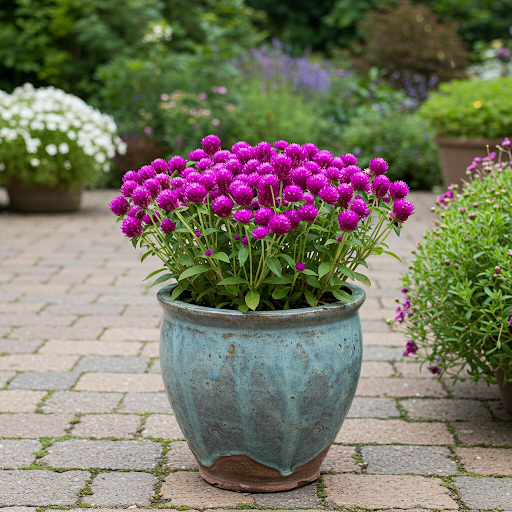
Hoyas
Important Note: The key to success with Hoyas in pots is providing excellent drainage and avoiding overwatering. Treat them more like orchids or succulents in terms of watering – less is often more. With proper light, well-draining soil, and careful watering, your potted Hoyas will thrive and reward you with their unique and fragrant blooms, bringing a touch of the tropics to your outdoor container garden!
KC2-GS
By greenship|2024-08-16T06:30:21+00:00August 16, 2024|Categories: Hand-carving Series|
8 inch/10 inch Planter Indoor Plants, 2 Pack Modern Decorative Plant Pots with Drainage Hole, Cute Bowl Shape Flower Pots
By greenship-seo|2025-04-10T08:03:42+00:00January 9, 2025|Categories: Hand-carving Series|Tags: Decorative Flower Pots, Self-Watering Pots|
GreenShip 27inch Tall Planters for Porch, Large Outdoor Planter Pots with Drainage Hole
By greenship-seo|2025-04-10T06:27:21+00:00April 7, 2025|Categories: Hand-carving Series|Tags: Decorative Flower Pots|
Modern Plant Pots丨Planter for Indoor Plants,8 inch or 10 inch Plant Pots with Drainage Hole,Decorative Flower Pots
By greenship-seo|2025-04-10T08:32:55+00:00January 7, 2025|Categories: Hand-carving Series|Tags: Decorative Flower Pots, Self-Watering Pots|
20YB
By greenship|2024-08-16T05:37:57+00:00August 16, 2024|Categories: Hand-carving Series|
11THD
By greenship|2024-08-13T02:52:20+00:00August 13, 2024|Categories: Hand-carving Series|

